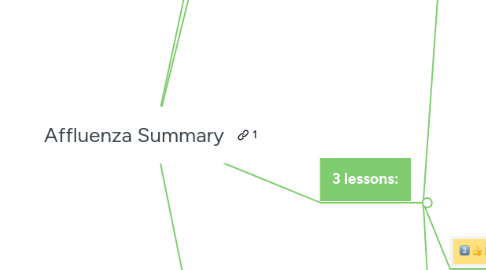
1. 1-Sentence-Summary:
1.1. Affluenza asserts that the reason we are so unhappy is because of our obsession with consumption and the sickness that it brings upon ourselves and the world around us as well.
2. Favorite quote from the author:
2.1. Affluenza, n. a painful, contagious, socially transmitted condition of overload, debt, anxiety, and waste resulting from the dogged pursuit of more. - John De Graaf, David Wann, Thomas H. Naylor
3. 3 lessons:
3.1. If you think you need the latest version of the iPhone to be happy, you’re trying to cover your misery but you’re only making it worse.
3.1.1. When you buy a new phone, it can feel exhilarating.
3.1.1.1. But after a couple days with the new phone, it’s no longer exciting because the novelty has worn off.
3.1.1.2. This is just one example of how buying things only created a momentary satisfaction, but it will never make us happy.
3.1.2. The more stuff we buy, the less happy we tend to be.
3.1.2.1. Because the more stuff we consume, the harder we have to work to keep up with our consumption.
3.1.2.2. This leaves us with less time to do the things that actually make us happy, like spending time with family or friends.
3.1.3. Most of us work long hours so we can keep up with ever-increasing spending habits.
3.1.4. We’re to busy to spend time with our kids.
3.1.5. Couples are spending less time socializing with each other.
3.1.6. The author calls this cocooning.
3.1.6.1. We compensate for our unhappiness by buying things because we don’t have the time to build meaningful relationships.
3.1.7. The only way to break this vicious cycle is to seek out what we really need: connections with the people around us and with nature.
3.2. Buying less stuff will make you happier.
3.2.1. Come to terms with the fact that buying things will never make you happy while buying less actually can.
3.2.2. Science has actually proved this.
3.2.3. Buy less and try to get more out of what you do have.
3.2.4. Young professionals in Seattle have actually opted to live in tiny apartments, nicknamed “apodments” so they can fight cocooning.
3.2.4.1. Because they’re so small, it forces them to get out and be social and to be in nature.
3.2.5. Living in this day and age of technology isn’t all bad. It allows us to more easily connect with others.
3.2.5.1. Support from others who struggle with over-consumption can be the key to solving the issue.
3.2.5.2. Online, it can be easy to find others who struggle with affluenza and want to live a more minimalist lifestyle.
3.3. Education about media tactics and undermining its influence on you are the immunization against the affluenza virus.
3.3.1. Everywhere we look, whether it’s billboards, magazines, or anywhere on the internet, we are exposed to advertising that compels us to buy more and more, even if we don’t need it.
3.3.2. A suggestion the author gives to fight affluenza is to use anti-ads.
3.3.2.1. These are the exact opposite of an advertisement and causes viewers to really think about what they’ve seen, rather than mindlessly consume.
3.3.2.2. An example of an anti-ad is one where two cowboys similar in resemblance to the Marlboro Man are riding horses into the sunset and below there is a caption reading, “I miss my lung, Bob.”
3.3.3. Schools are starting to recognize the amount of media consumption children are taking part in.
3.3.3.1. They spend an average of 40 minutes a week outside but now spend somewhere around 50 hours a week with electronic media.
3.3.4. Some schools have started to teach kids to analyze media, an effort called “media literacy.”
3.3.4.1. This is a way to teach kids that they should analyze and question advertisements they see, and arguably this is starting to be just as important as literacy itself.
